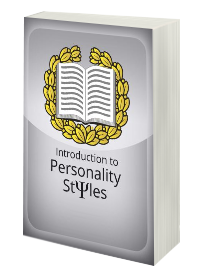Multidimensional Anger Test
You are here because one of your friends linked you to their Multidimensional Anger result:
Take the TestYour friend's results:

This makes your friend 21.2% more susceptible to anger than the average person.
Take the TestExplanation of Facets:
Anger Arousal
Anger arousal denotes the frequency, magnitude and duration of a person’s angry responses. People who score high on anger arousal are quick to escalate from their normal state to the state of anger. Their anger usually has an affective charge, and they may experience their own anger and the bodily sensations that accompany it as overwhelming.
Anger Spectrum
Anger spectrum refers to the scope and breadth of situations that are likely to trigger an angry response in the person. People who score high on this dimension are capable of letting their frustrations turn into anger when faced with a wide range of situations. Note that this range only indicates the variety of situations that are likely to make the person angry, and not the intensity or magnitude of that person’s anger (that is denoted by Anger Arousal).
Hostile Outlook
People who score high on hostile outlook view the world in a cynical, suspicious and mistrustful way. They have an easy time attributing ill intentions to others, and often assume that others are lying or do not have their best interests at heart. People who are characterized by a hostile outlook usually experience a wide range of anger cognitions, but not necessarily anger emotions.
External Anger
External anger refers to a person's tendency to take their anger out on their surroundings. Because this type of anger is so evident to others, people who score high on external anger are usually known for their temper. Their propensity to vent their anger externally may cause others to submit to or accommodate them, but on the other hand, it may also cause people to withdraw from them and keep them at a distance.
Internal Anger
Internal anger denotes a person's tendency to keep their anger on the inside without making their surroundings aware of that anger. People who score high on internal anger tend to feel guilt over expressing their anger, but at the same time may also blame themselves in their thoughts for failing to express that they are angry. As a consequence, they often have trouble enforcing reasonable boundaries in their relations with others.
Total Score
Your friend's total score, indicating their total predisposition for, and susceptibility to, anger. Higher scores indicate greater problems with anger.
References
The test was constructed on the basis of the following scientific studies:
- Eckhardt, Norlander & Deffenbachercher: The Assessment of Anger and Hostility: a Critical Review Aggression and Violent Behavior, Volume 9, Issue 1, Jan–Feb 2004
- Kashdan, Goodman, Mallard & DeWall: What Triggers Anger in Everyday Life? Links to the Intensity, Control, and Regulation of These Emotions, and Personality Traits Journal of Personality, Volume 84, Issue 6, Dec 2016
- Kroner, Reddon & Serin: The Multidimensional Anger Inventory: Reliability and Factor Structure in an Inmate Sample Educational and Psychological Measurement, Volume: 52, Issue 3, Sep 1992
- Martin, Watson & Wan: A Three-Factor Model of Trait Anger: Dimensions of Affect, Behavior, and Cognition Journal of Personality, Volume 68, Issue 5, Oct 2000
- Siegel, Judith M.: The Multidimensional Anger Inventory Journal of Personality and Social Psychology, Vol 51(1), Jul 1986
Take Next
GET THE FULL STORY
Become a lifetime member with a one-time payment
WHAT YOU GET
Access to members-only tests
Ability to track and save test results
Access to all of our eBooks (value $44.94)
Access to premium type assessments and infographics
Become a memberGET THE FULL STORY
Manual of Personality Styles
WHAT YOU GET
71-page manual, explaining the make-up of all personality styles, their hidden drives, and the theory behind the system.
Presented in an easy-to-read style and backed up by solid academic references.
14-day, no-questions-asked, money-back guarantee.
Order NowSave and monitor your results over time
Become a member today
Sign Up












